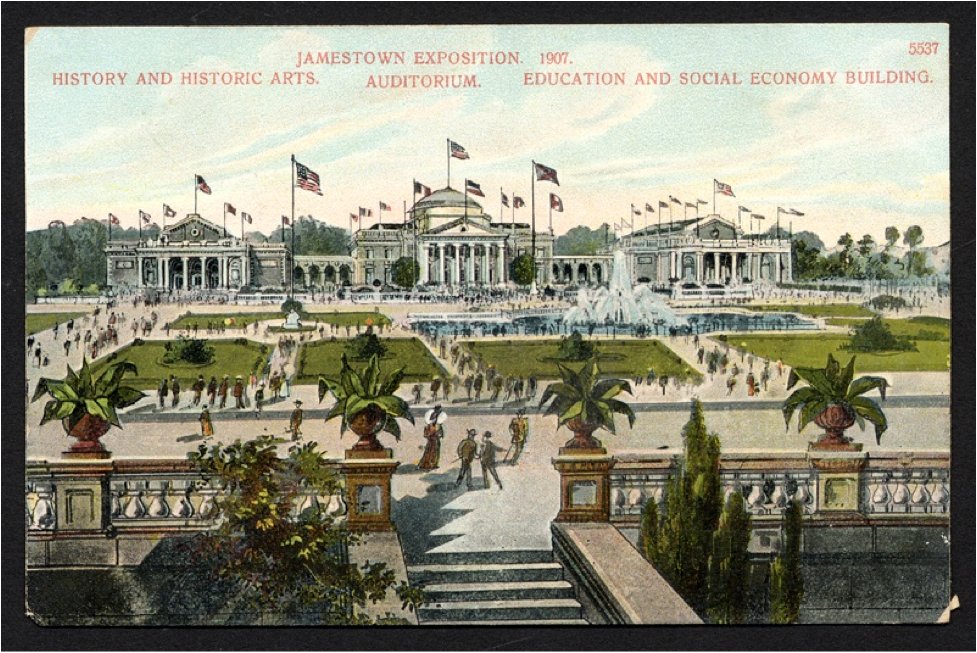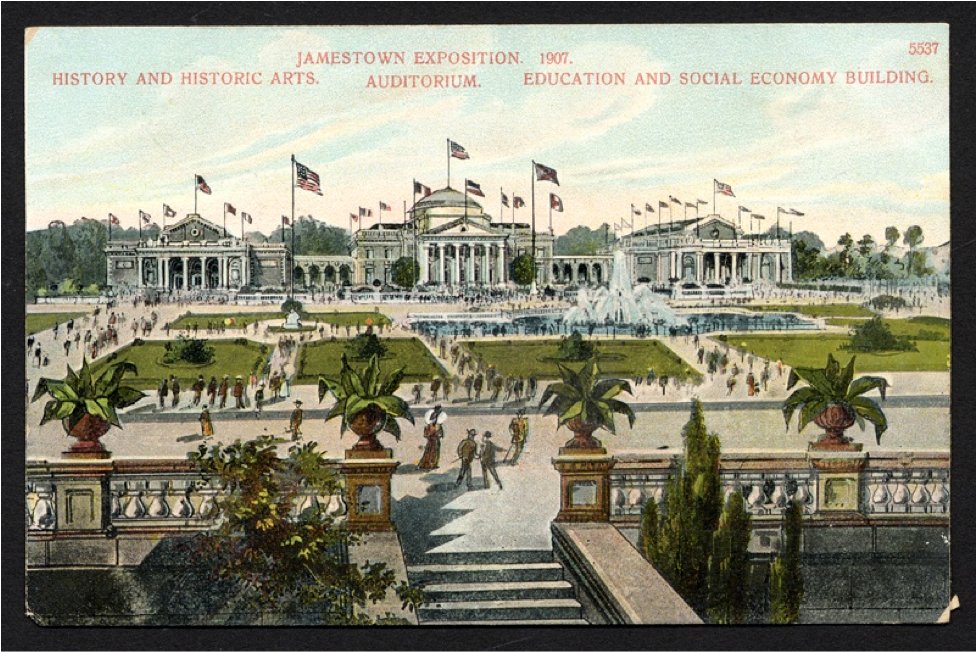#NovaScotia #gold won first prize at the Jamestown Exhibition in 1907!
The Exposition – a 7-month fair – celebrated the 300th anniversary of the founding of #Jamestown, the first permanent English settlement in North America.
Here's the story:
#nspoli #cbpoli #capebreton
The Exposition – a 7-month fair – celebrated the 300th anniversary of the founding of #Jamestown, the first permanent English settlement in North America.
Here's the story:
#nspoli #cbpoli #capebreton

The Exposition had exhibits, rides, games, shows and many VIPs, including US President Roosevelt and Mark Twain…not to mention #NovaScotia’s Premier George Henry Murray, our lieutenant governor, cabinet ministers and a delegation of hundreds of other Nova Scotians.
#nspoli
#nspoli

#NovaScotia’s #gold exhibit won a top prize and the province’s participation at the event garnered much praise. According to the Irvington Gazette, #NS’s display at the exposition included an impressive collection of “precious and economic minerals of the country with...
#nspoli
#nspoli

...gold, in which the province is so rich, predominating.” The Miami Metropolis reported “#NovaScotia has the most valuable exhibit of #gold ore shown at the mines and metallurgy building, and which has resulted in attracting much favourable attention to the Canadian province.” 

October 24 was “Nova Scotia Day” at the Exposition. The program included “magnificent military and naval reviews” and, with so many politicians present, it inevitably included “much speech-making!”
#nspoli #cbpoli #novascotia #capebreton
#nspoli #cbpoli #novascotia #capebreton

The mineral collection displayed in Jamestown was from the Provincial Museum in #Halifax (now called the Nova Scotia Museum), which was established in October 1868 as a general museum of science and history.
#nspoli #cbpoli #novascotia #capebreton @NS_Museum @ns_moi
#nspoli #cbpoli #novascotia #capebreton @NS_Museum @ns_moi

One of the museum’s founding collections was a display of #NovaScotia minerals after it was shown at world’s fairs and other exhibitions. The 1907 version of the collection was also shown at the Industrial Exhibition in Toronto in 1908.
#nspoli #capebreton @NS_Museum @ns_moi
#nspoli #capebreton @NS_Museum @ns_moi

Unfortunately for the good people of Jamestown, the Exposition was not a success. It lost huge amounts of money and only about half of attendees actually paid the admission. It was plagued with construction issues and many of the buildings were not complete...
#nspoli #cbpoli
#nspoli #cbpoli

...until several months after the exposition started. The New York Times called it "the most colossal failure in the history of exhibitions.”
#nspoli #cbpoli #novascotia #capebreton
#nspoli #cbpoli #novascotia #capebreton

On the other hand, the site became the largest naval base in the world - Naval Station #Norfolk - partly because of the buildings constructed for the exposition.
#nspoli #cbpoli #novascotia #capebreton @NorfolkVA
#nspoli #cbpoli #novascotia #capebreton @NorfolkVA

• • •
Missing some Tweet in this thread? You can try to
force a refresh



























